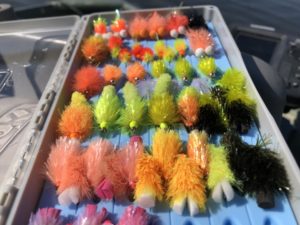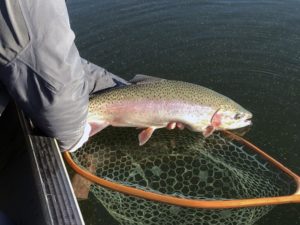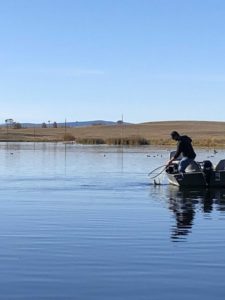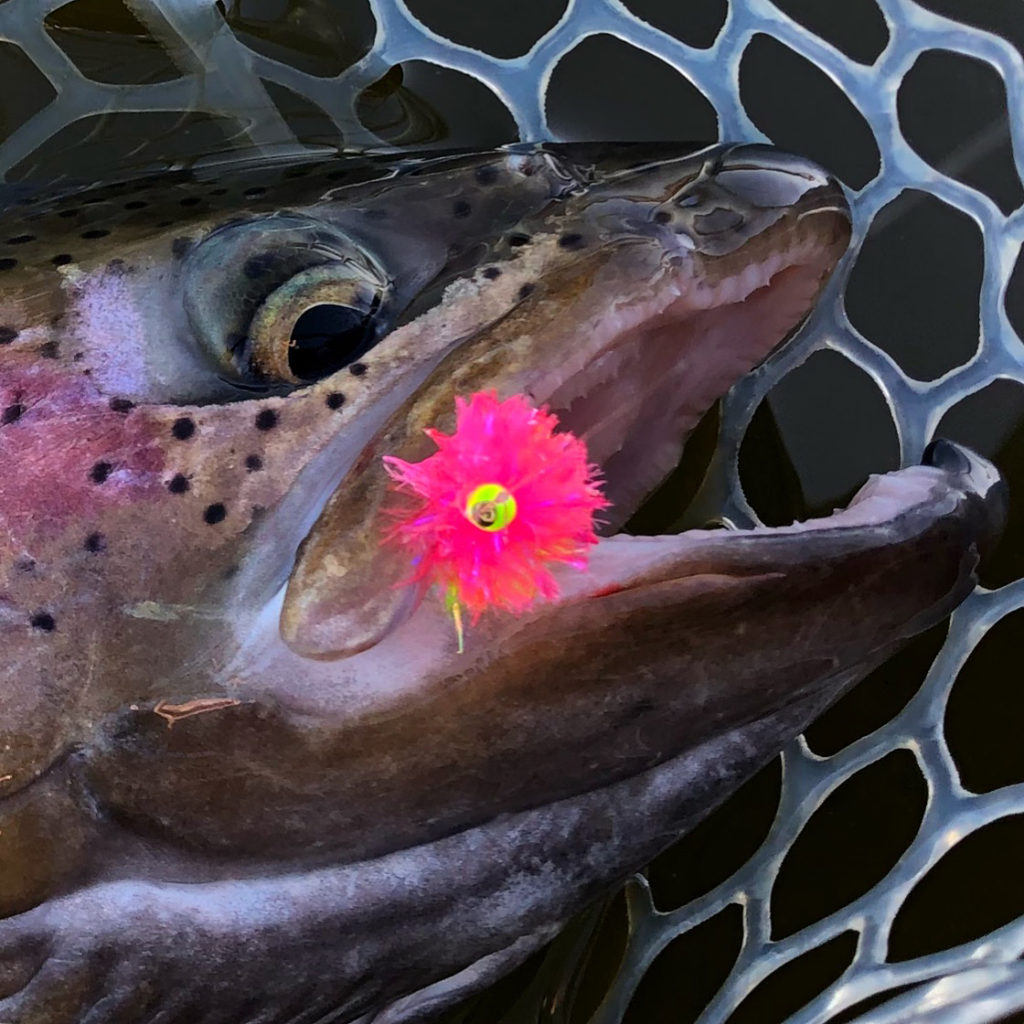Expert Advice
The Pink Dancer Fly Pattern: Sweep ‘Em off their Fins
As fly fishers and tyers we spend much of our effort attempting to match the hatch. Using flies and presentation techniques intended to draw a natural feeding response from a trout. The reality is that at times trout aren’t feeding. Our natural attempts go unanswered. In these situations, use patterns and techniques to trigger a reaction, either by curiosity, aggression or territoriality. In short attractors, like the Pink Dancer Fly.
Check out this tying video from Field Team member Phil Rowley for instructions on how to tie this killer stillwater attractor pattern, then read on below for how to use it effectively.
How to Fish the Pink Dancer Fly
Good friend Matt Nelson is a firm believer in the power of attraction. The art of using bright gaudy flies most often fished aggressively to trigger a grab. Matt has designed a number of unique, loud and obnoxious attractor patterns that work unbelievably well at times. His Pink Dancer Fly is a personal favorite as it performs both stripped a pace or just left to hang static beneath an indicator.
 Most attractor patterns and the presentation techniques associated with them are aggressive. Fast sinking lines coupled with a rapid four to six-inch strip pause retrieve intended to elicit a chase or flee response culminated with a hard, punishing, take. There are situations however when a more docile approach works.
Most attractor patterns and the presentation techniques associated with them are aggressive. Fast sinking lines coupled with a rapid four to six-inch strip pause retrieve intended to elicit a chase or flee response culminated with a hard, punishing, take. There are situations however when a more docile approach works.
When to Fish Blob Fly Patterns
At times throughout the season, most often during the late summer through early fall, trout fixate on tiny, tough to match, prey. Microscopic zooplankton and transparent Chaoborus larva and pupa are common culprits. Chaoborus larva or glass worms feed on zooplankton. Trout often single out the larva or zooplankton or feed on them both at the same time. Prime scenarios for suspending, under an indicator, gaudy Blob patterns tied in color schemes to match common zooplankton colors including shades of orange, chartreuse, hot pink and red. Two-tone Blobs, such as Matt’s Pink Dancer also work well.
Tying with Fritz Material
 Fritz, a chenille-like, body material is the primary Blob component. Besides a myriad of color options there is an almost overwhelming amount of Fritz to choose from. Original Fritz, Jelly Fritz, Daphina Fritz, Slush Jelly, Eggstacy and Block Jelly to name a few. Every week it seems like there is a new flavor. Most times it comes down to what is available and personal preference. There are also different length Fritz fiber lengths too to further complicate things. I use 15MM Fritz most of the times, but I also have a selection of smaller 6MM Blobs too. Just in case.
Fritz, a chenille-like, body material is the primary Blob component. Besides a myriad of color options there is an almost overwhelming amount of Fritz to choose from. Original Fritz, Jelly Fritz, Daphina Fritz, Slush Jelly, Eggstacy and Block Jelly to name a few. Every week it seems like there is a new flavor. Most times it comes down to what is available and personal preference. There are also different length Fritz fiber lengths too to further complicate things. I use 15MM Fritz most of the times, but I also have a selection of smaller 6MM Blobs too. Just in case.
All of these materials come in vibrant fluorescent colors that standout in deep water where most zooplankton are found. My current favorites include; UV Fritz, Jelly Fritz, and Slush Jelly. Matt’s Pink Dancer Fly utilizes vivid UV Fritz. The Vivid Pink and Fluorescent Chartreuse body of the Pink Dancer really pops when wet. Jelly Fritz offers wonderful translucence which can be augmented by an underbody of mirage opal Mylar. Slush Jelly is a mixture of soft chenille and Jelly Fritz fibers. Once wet, Slush Jelly colors intensify.
Fritz and Jelly Fritz are much easier to work with wet. This is best accomplished by using moistened fingers or saturating the Fritz in water prior to tie in. Wet fibers are easily tamed allowing you to sweep the fibers back after each wrap forming a neat, tight, compact body.
Give it a Try
 Regardless of the body options Blobs are simple and quick to tie. Short shank hooks such as a curved scud style hook work best to suggest zooplankton clusters. In addition to complimenting the overall color scheme, the addition of gold, silver or fluorescent colored bead help animate a stripped Blob or sink it under an indicator. A short flashy tail catches light calling fish from a distance. Pearlescent Flashabou or my personal favorite Krinkle Mirror Flash are great tail options. At times a bit of movement in the form of marabou helps. Other times having a tail doesn’t seem to matter. The tail choice is up to you.
Regardless of the body options Blobs are simple and quick to tie. Short shank hooks such as a curved scud style hook work best to suggest zooplankton clusters. In addition to complimenting the overall color scheme, the addition of gold, silver or fluorescent colored bead help animate a stripped Blob or sink it under an indicator. A short flashy tail catches light calling fish from a distance. Pearlescent Flashabou or my personal favorite Krinkle Mirror Flash are great tail options. At times a bit of movement in the form of marabou helps. Other times having a tail doesn’t seem to matter. The tail choice is up to you.
Many fly fishers wonder, just how does a Blob suggest zooplankton? A #12, #10 or #8 blob is much larger than the tiny individual zooplankton. I believe the large size appeals to the trout as a zooplankton cluster or the particular zooplankton color trout are focused on. Trout could also be taking Blobs out of simple curiosity. No matter the reason, Blobs such as Matt’s Pink Dancer work. Make sure you always have a selection to choose from.


